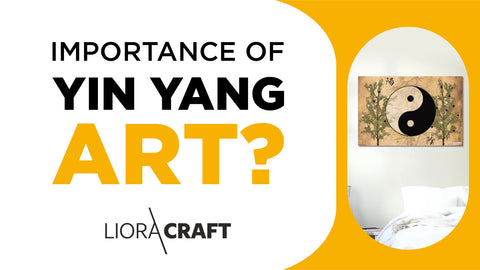Yin Yang Mandala Art
Originating from Chinese philosophy, Yin Yang Art symbolizes balance, harmony, and interdependence. Cultures all throughout the world use this spinning pattern to represent balance. This investigates modern cultural influence, forms like the Tree of Life Yin Yang. It also investigates about the Yin Yang Mandala Art, and the philosophical foundations behind them.
Ancient Chinese philosophy describes Yin Yang as cosmic balance and harmony. Yin Yang art is balanced chaos and order, light and dark, male and female. Its importance comes from beauty and symbolism.
Yin and yang artwork is magnificent with stark contrasts and flowing patterns. Meditation and life balance are promoted by the classic black-and-white circle with connecting portions. Besides aesthetics, Yin Yang art teaches that opposites form wholeness and nothing is absolute.
The cultural link between philosophy and spirituality inspires reflection. Modern tattoos and home décor employ Yin Yang imagery, illustrating its timeless value. It shows that accepting good and negative builds resilience. Yin Yang art encourages viewers to imagine harmony and achieve balance in their life. This helps in making it a strong reflective tool and a testament to old concepts.
What is Yin Yang Art?
Taoist Yin and Yang depicts existence as dual, inspiring Yin Yang Art. Yang denotes brightness, activity, and masculinity; Yin represents darkness, lethargy, and femininity. Their dynamic connection proves opposites complement. Taijitu, the Yin Yang sign, represents this principle with its two halves. These are black with a white dot and white with a black dot. Each carries the seed of its opposite.
Beyond its symbolic shape, Yin Yang inspires paintings, sculptures, tattoos, and computer creations. Artists explore balance, dualism, and harmony. Whether a simple doodle or a complicated mandala art, Yin Yang Art challenges viewers to find harmony in contrasts. Since it emphasizes life's interdependence, it appeals to diverse audiences worldwide.
Its ability to mix philosophy and aesthetics makes Yin Yang Art noteworthy. Attention and balance between work and rest, chaos and order, or self and community are promoted. This art form anchors us in a fast-paced society by showing us that opposites may coexist.
Life Tree Yin Yang: Balance and Growth Symbol: Tree of Life Yin Yang Art is amazing. The Tree of Life represents civilizations' growth, power, and connectivity. The Yin Yang symbol and natural and intellectual imagery mix powerfully.
The Life Tree Roots and branches of Yin Yang design reflect the symbol's swirling halves. Earthy roots represent Yin—stability and care. Yang—growth and ambition—is symbolized by the branches. As axis, the tree stem unites these forces. This graphic depicts how roots and branches support trees.
Spiritual significance is in the Yin Yang Tree. It symbolizes life, death, rebirth, and interdependence. It reminds many to stay loyal to them while maturing. This design in jewellery, tattoos, and home decor represents balance and endurance.
Modern environmental awareness is reflected in the Tree of Life Yin Yang. It promotes land preservation (Yin) and progress (Yang). As an art motif, it promotes peace and harmony.
Journey Inside the Yin Yang Mandala Art
The Yin Yang mandala art is another significant art style. Mandalas mean “circle” in Sanskrit. They are intricate geometric depictions of the universe and self.
Mandala art yin yang centers on the Taijitu with radiating symmetrical motifs. These patterns use light and dark, curves and angles to represent Yin and Yang artwork. Repeated patterns improve focus and reflection, making Yin Yang Mandalas tranquil. Mandala-making is therapeutic because it symbolizes self-equilibrium.
Yin Yang Mandala Art encourages meditation. Mandalas reveal strengths and shortcomings.
The core Yin Yang emblem reminds practitioners that balance produces wholeness. This art form relieves tension and heals emotionally in yoga and therapy.
Traditional and spiritual, Yin Yang Mandalas matter. Yin Yang mixes Taoist ideas with Buddhist and Hindu mandalas, sacred meditation tools. This proves equilibrium transcends culture.
Yin Yang Mandala Art Legacy
The importance of Yin Yang wall art goes beyond looks. It combines ancient and modern wisdom. Despite turmoil, Yin Yang Art has a timeless message: harmony is possible by embracing contrasts. Mandalas and the Tree of Life yin yang inspire peace in life and community. Personal importance arises with Yin Yang Art. It inspires and empowers self-reflection and growth. This versatile material can be used for meaningful tattoos and room-transforming wall art. People learn about themselves and the universe through Yin Yang Art.
Yin Yang Art is linked to wellness and environmental initiatives. Slowing down and seeking equilibrium is part of the mindfulness movement. The Tree of Life Yin Yang promotes ecological equilibrium with its environmental connotations.
Conclusion
Balance and harmony last in Yin Yang Art. It inspired Taoism, Mandala Art, and the Tree of Life. This art form promotes duality, balance, and harmony in contrasts. Whether you like its beauty or symbolism, Yin Yang Art encourages mindfulness, growth, and connection. Yin Yang Art reminds us that harmony is a journey through life's challenges.



